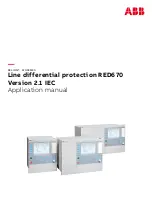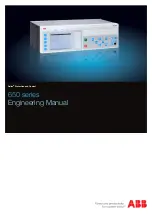
Installation, Wiring, and Specifications
2–20
Installation, Wiring, and Specifications
Output Point Wiring
Ground
Neutral
Line
Fuse or
Circuit
Breaker
+
–
Inductive load devices (devices with a coil) generate transient voltages when
de-energized with a relay contact. When a relay contact is closed it “bounces”, which
energizes and de-energizes the coil until the “bouncing” stops. The transient
voltages generated are much larger in amplitude than the supply voltage, especially
with a DC supply voltage.
When switching a DC-supplied inductive load the full supply voltage is always
present when the relay contact opens (or “bounces”). When switching an
AC-supplied inductive load there is one chance in 60 (60 Hz) or 50 (50 Hz) that the
relay contact will open (or “bounce”) when the AC sine wave is zero crossing. If the
voltage is not zero when the relay contact opens there is energy stored in the
inductor that is released when the voltage to the inductor is suddenly removed. This
release of energy is the cause of the transient voltages.
When inductive load devices (motors, motor starters, interposing relays, solenoids,
valves, etc.) are controlled with relay contacts, it is recommended that a surge
suppression device be connected directly across the coil of the field device. If the
inductive device has plug-type connectors, the suppression device can be installed
on the terminal block of the relay output.
Transient Voltage Suppressors (TVS or transorb) provide the best surge and
transient suppression of AC and DC powered coils, providing the fastest response
with the smallest overshoot.
Metal Oxide Varistors (MOV) provide the next best surge and transient
suppression of AC and DC powered coils.
+24 VDC
–24 VDC
Module Relay Contact
–324 VDC
+24 VDC
For example, the waveform in the figure below shows the energy released when
opening a contact switching a 24 VDC solenoid. Notice the large voltage spike.
Surge Suppresion
For Inductive
Loads
Summary of Contents for DL05
Page 1: ...DL05 User Manual Automationdirect com ...
Page 2: ...DL05 User Manual Automationdirect com ...
Page 436: ...1B DL05 Error Codes In This Appendix Ċ Error Code Table ...
Page 443: ...1C Instruction Execution Times In This Appendix Ċ Introduction Ċ Instruction Execution Times ...
Page 459: ...1D Special Relays In This Appendix Ċ DL05 PLC Special Relays ...
Page 464: ...1E DL05 Product Weights In This Appendix Ċ Product Weight Table ...
















































